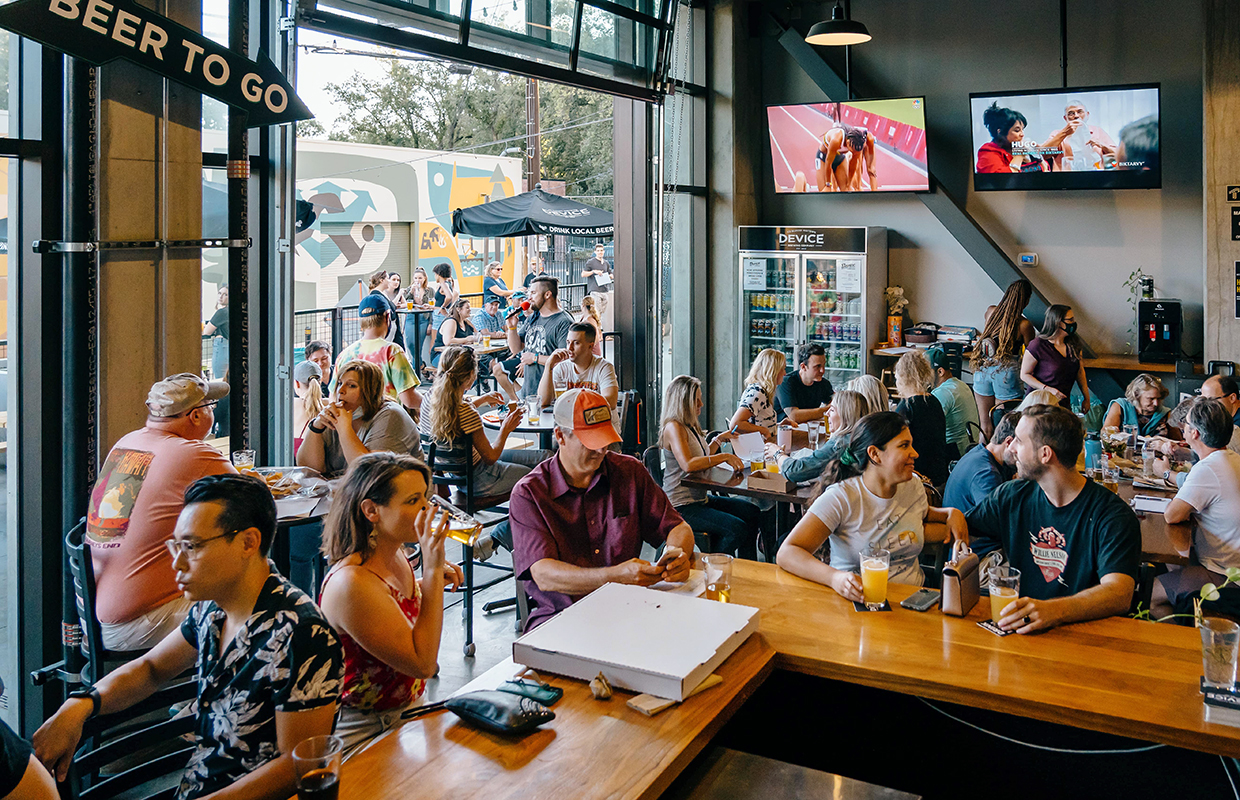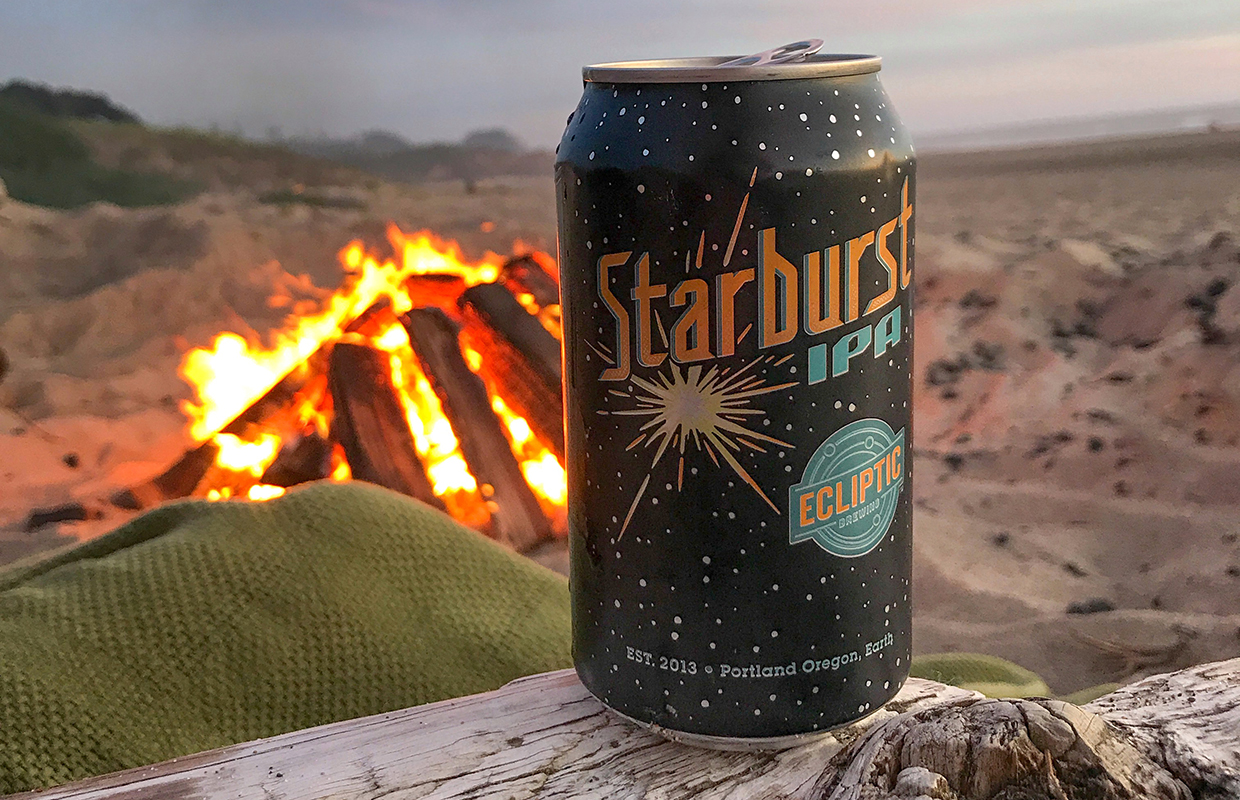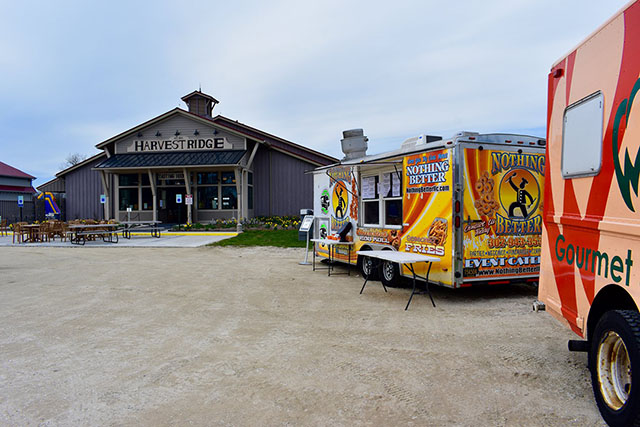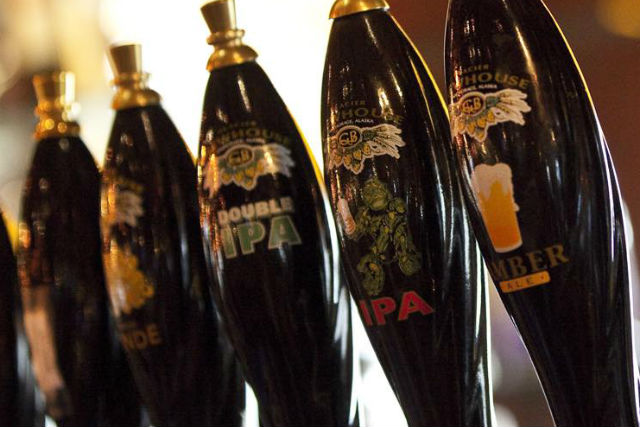
Ken Anthony feels pretty spread out. And he’s pleased with it.
The founder of Device Brewing, Anthony started the brewery in an industrial part of Sacramento, just southeast of the downtown area in late 2013.
Now, ready to celebrate its 10th anniversary this year, Device sports three unique locations catering to three different parts of the city and clientele with a good part of the brewery’s beer flowing through taps at those locations.
“The mix is always a little different at the individual locations,” he admitted. “We hardly sell any seltzer here at the brewery taproom. We sell a ton of seltzer at our restaurant and Midtown locations. But we also see a huge amount of Hazy IPAs go out of our Midtown location.
“We sell most of our darker beers — whether that’s a Winter Ale or a Dunkel, a Nitro Stout or Porter … things like that, we see a lot more that go through our taproom here at the brewery than we do with the other two. We sell a lot of IPAs here too. But certainly not a whole lot of seltzers here at the brewery.”
Device does can and keg as well, but Anthony likes to be able to see people lifting a pint in those locations, the production brewery with a taproom, along with the Ice Blocks Midtown spot and Pocket Greenhaven Taproom & Kitchen location.
“The margin on wholesale is very thin,” he explained about the 5,000-barrel-per-year production brewery. “It’s even thinner when your production volume is low.
“We don’t have the economy of scale that some of our larger competitors do. And at that point, increasing our volume through our distribution channels was attractive, but only for brand building, not for profitability.”
READ MORE: The 2 Ideals Device Sticks With to Stay Relevant
When Device opened its first satellite location, they were already in distribution using a mobile canner and Anthony said the volume of cans going out to the distributor was, “just eating our lunch.
“We could barely justify it because of the cost to produce that canned product and the volume that was going out,” he said. “On a long enough timeline, either we were going to have to stop that production or reduce the volume.
“How do you tell your retailers and your distributor that you’ve worked so hard to establish this, how do you tell them we’re backing off? So we made the choice to invest in our first satellite taproom.”
The first location in Midtown was for brand building, and because it put Device where the people were.
“Sure, people come out here, plenty of people come out here, but a whole lot more people go to Midtown,” Anthony said. “That’s the nightlife. That’s where the people are. It was brand building, visibility, and selling our beer at the best margin that one can get.”
For Midtown, the clientele is very much the young adult drinker, who’s out for the evening and wants to see and be seen, Anthony said.
“They’re gonna go out and they’re gonna be at four to six different places that evening, ours being one of them, which is basically the idea,” he said. “I find that location is a big attractor for young people, because it’s right where they are.
“We’ve got the suburban bedroom community down in the Pocket area with families and soccer teams and empty nesters. Then, we’ve got our original taproom location, which gets an eclectic mix. It’s the after-work people that work out here or live nearby, they come in and they like it that way. They don’t want it to be too loud and too busy and too wild, they like to see the same faces and the same bartenders. So it’s interesting the way that the same company can have three different locations that all have three completely different environments.”
Anthony is meticulous in leaving a paper trail to track how each location is doing. The brewery purchases beer from the production team, even to tap in the production taproom.
“There is a paper trail on all the beer that gets brought to all three of our taproom locations,” Anthony explained. “It’s done by way of purchase as if we were purchasing it from our distributor, the same price. The reason we do that is so we can run separate P&Ls for all of our locations.
“How do you know how any of those individual businesses is doing if all this ‘free beer’ is showing up? How do I know how well my production team is doing and watching their costs? If someone’s ‘stealing their beer’ and taking it to taprooms. So the only way to allow production to realize those sales was to sell it to ourselves. And then the only way to hold our individual taproom businesses accountable for how well we’re performing is to purchase all that beer. Otherwise, everything looks great when all the beer comes into the house free.”




Be the first to comment